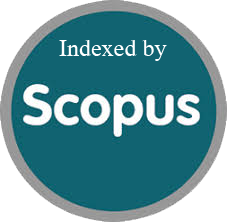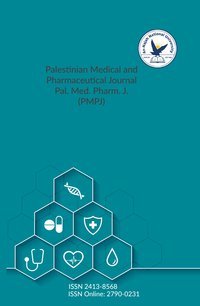Trifluorooxoacetamido Benzamides as Breakthrough CETP Inhibitors: A Synergistic Approach of Synthesis, Biological Assessment, and Molecular Modeling
Article info
2025-02-17
2025-06-01
2025-08-07
None - None
Keywords
- Benzamides
- Inhibitors
- Induced-fit docking
- Trifluoro-oxoacetamido
- CETP
- Pharmacophore
Abstract
Cardiovascular diseases are the first leading cause for death in the United States and the third globally. Cholesteryl ester transfer protein (CETP) is a glycoprotein excreted mainly from the liver and transfers cholesteryl esters from high-density lipoproteins to low-density lipoproteins. Inhibition of CETP activity decreases lipid transfers, which raises high-density lipoprotein cholesterol and lowers that of low-density lipoproteins. Cardiovascular risk is decreased when CETP activity is inhibited. There is a growing need for new CETP inhibitors which encourages us to conduct this research. In this work, synthesis of eighteen new trifluoro-oxoacetamido benzamides 9a-r was carried out by nucleophilic acyl substitution reaction to form the amide followed by characterization of the prepared derivatives using 1H-NMR, 13C-NMR and IR spectroscopy. In vitro study showed that the synthesized compounds 9a-r exhibited distinguished activity against CETP with IC50 values ranging from 1.24 µM to 7.16 × 10-8 µM, where compound 9l had the best activity. Induced-fit docking results illustrated that torcetrapib, anacetrapib, and 9a-r accommodated CETP binding cleft and that hydrophobic force predominated the inhibitor/CETP complex formation. Additionally, they bonded to C13, Q199, R201, and H232 residues through H-bond. ΔG of the verified analogues surpassed that of co-crystallized ligand (0RP) and anacetrapib anticipating the matching of analogues’ core structures to CETP key binding residues. Moreover, inhibitors 9a-r mapped the pharmacophore model’s fingerprint of CETP active inhibitors and subsequently elaborated the binding score values against CETP binding domain.
Abu Khalaf, R., NasrAllah, A., Sabbah, D., Ikhmais, B., AlBadawi, G., & Awad, M. (2025). Trifluorooxoacetamido Benzamides as Breakthrough CETP Inhibitors: A Synergistic Approach of Synthesis, Biological Assessment, and Molecular Modeling. Palestinian Medical and Pharmaceutical Journal, 11(4). https://doi.org/10.59049/2790-0231.11.4.2554
[1]R. Abu Khalaf, A. NasrAllah, D. Sabbah, B. Ikhmais, G. AlBadawi, and M. Awad, “Trifluorooxoacetamido Benzamides as Breakthrough CETP Inhibitors: A Synergistic Approach of Synthesis, Biological Assessment, and Molecular Modeling,” Palestinian Medical and Pharmaceutical Journal, vol. 11, no. 4, Aug. 2025, doi: 10.59049/2790-0231.11.4.2554.
Abu Khalaf, Reema, et al. “Trifluorooxoacetamido Benzamides as Breakthrough CETP Inhibitors: A Synergistic Approach of Synthesis, Biological Assessment, and Molecular Modeling.” Palestinian Medical and Pharmaceutical Journal, vol. 11, no. 4, Aug. 2025. Crossref, https://doi.org/10.59049/2790-0231.11.4.2554.
1.Abu Khalaf R, NasrAllah A, Sabbah D, Ikhmais B, AlBadawi G, Awad M. Trifluorooxoacetamido Benzamides as Breakthrough CETP Inhibitors: A Synergistic Approach of Synthesis, Biological Assessment, and Molecular Modeling. Palestinian Medical and Pharmaceutical Journal [Internet]. 2025 Aug;11(4). Available from: http://dx.doi.org/10.59049/2790-0231.11.4.2554
Abu Khalaf, Reema, Areej NasrAllah, Dima Sabbah, Balqis Ikhmais, Ghadeer AlBadawi, and Maha Awad. “Trifluorooxoacetamido Benzamides as Breakthrough CETP Inhibitors: A Synergistic Approach of Synthesis, Biological Assessment, and Molecular Modeling.” Palestinian Medical and Pharmaceutical Journal 11, no. 4 (August 2025). https://doi.org/10.59049/2790-0231.11.4.2554.
Trifluorooxoacetamido Benzamides as Breakthrough CETP Inhibitors: A Synergistic Approach of Synthesis, Biological Assessment, and Molecular Modeling
معلومات المقال
2025-02-17
2025-06-01
2025-08-07
None - None
الكلمات الإفتتاحية
- Benzamides
- Inhibitors
- Induced-fit docking
- Trifluoro-oxoacetamido
- CETP
- Pharmacophore
الملخص
Cardiovascular diseases are the first leading cause for death in the United States and the third globally. Cholesteryl ester transfer protein (CETP) is a glycoprotein excreted mainly from the liver and transfers cholesteryl esters from high-density lipoproteins to low-density lipoproteins. Inhibition of CETP activity decreases lipid transfers, which raises high-density lipoprotein cholesterol and lowers that of low-density lipoproteins. Cardiovascular risk is decreased when CETP activity is inhibited. There is a growing need for new CETP inhibitors which encourages us to conduct this research. In this work, synthesis of eighteen new trifluoro-oxoacetamido benzamides 9a-r was carried out by nucleophilic acyl substitution reaction to form the amide followed by characterization of the prepared derivatives using 1H-NMR, 13C-NMR and IR spectroscopy. In vitro study showed that the synthesized compounds 9a-r exhibited distinguished activity against CETP with IC50 values ranging from 1.24 µM to 7.16 × 10-8 µM, where compound 9l had the best activity. Induced-fit docking results illustrated that torcetrapib, anacetrapib, and 9a-r accommodated CETP binding cleft and that hydrophobic force predominated the inhibitor/CETP complex formation. Additionally, they bonded to C13, Q199, R201, and H232 residues through H-bond. ΔG of the verified analogues surpassed that of co-crystallized ligand (0RP) and anacetrapib anticipating the matching of analogues’ core structures to CETP key binding residues. Moreover, inhibitors 9a-r mapped the pharmacophore model’s fingerprint of CETP active inhibitors and subsequently elaborated the binding score values against CETP binding domain.
Abu Khalaf, R., NasrAllah, A., Sabbah, D., Ikhmais, B., AlBadawi, G., & Awad, M. (2025). Trifluorooxoacetamido Benzamides as Breakthrough CETP Inhibitors: A Synergistic Approach of Synthesis, Biological Assessment, and Molecular Modeling. Palestinian Medical and Pharmaceutical Journal, 11(4). https://doi.org/10.59049/2790-0231.11.4.2554
[1]R. Abu Khalaf, A. NasrAllah, D. Sabbah, B. Ikhmais, G. AlBadawi, and M. Awad, “Trifluorooxoacetamido Benzamides as Breakthrough CETP Inhibitors: A Synergistic Approach of Synthesis, Biological Assessment, and Molecular Modeling,” Palestinian Medical and Pharmaceutical Journal, vol. 11, no. 4, Aug. 2025, doi: 10.59049/2790-0231.11.4.2554.
Abu Khalaf, Reema, et al. “Trifluorooxoacetamido Benzamides as Breakthrough CETP Inhibitors: A Synergistic Approach of Synthesis, Biological Assessment, and Molecular Modeling.” Palestinian Medical and Pharmaceutical Journal, vol. 11, no. 4, Aug. 2025. Crossref, https://doi.org/10.59049/2790-0231.11.4.2554.
1.Abu Khalaf R, NasrAllah A, Sabbah D, Ikhmais B, AlBadawi G, Awad M. Trifluorooxoacetamido Benzamides as Breakthrough CETP Inhibitors: A Synergistic Approach of Synthesis, Biological Assessment, and Molecular Modeling. Palestinian Medical and Pharmaceutical Journal [Internet]. 2025 Aug;11(4). Available from: http://dx.doi.org/10.59049/2790-0231.11.4.2554
Abu Khalaf, Reema, Areej NasrAllah, Dima Sabbah, Balqis Ikhmais, Ghadeer AlBadawi, and Maha Awad. “Trifluorooxoacetamido Benzamides as Breakthrough CETP Inhibitors: A Synergistic Approach of Synthesis, Biological Assessment, and Molecular Modeling.” Palestinian Medical and Pharmaceutical Journal 11, no. 4 (August 2025). https://doi.org/10.59049/2790-0231.11.4.2554.

Since 2022
Cite Score (Scopus): 0.8
Time to First Decision: 3 Days
Submission to Acceptance: 45 Days
Acceptance to Publication: 64 Days
Acceptance Rate: 17%
Why should you
Publish With Us?
An-Najah National University
Nablus, Palestine
Nablus, Palestine
- P.O. Box
- 7, 707
- Fax
- (970)(9)2345982
- Tel.
- (970)(9)2345560
- (970)(9)2345113/5/6/7-Ext. 2628
- [email protected]
- EIC
- Prof. Waleed Sweileh
The Palestinian Medical and Pharmaceutical Journal (Pal. Med. Pharm. J.) © 2024 by An-Najah University, Nablus, Palestine is licensed under CC BY-NC 4.0
News and Views
